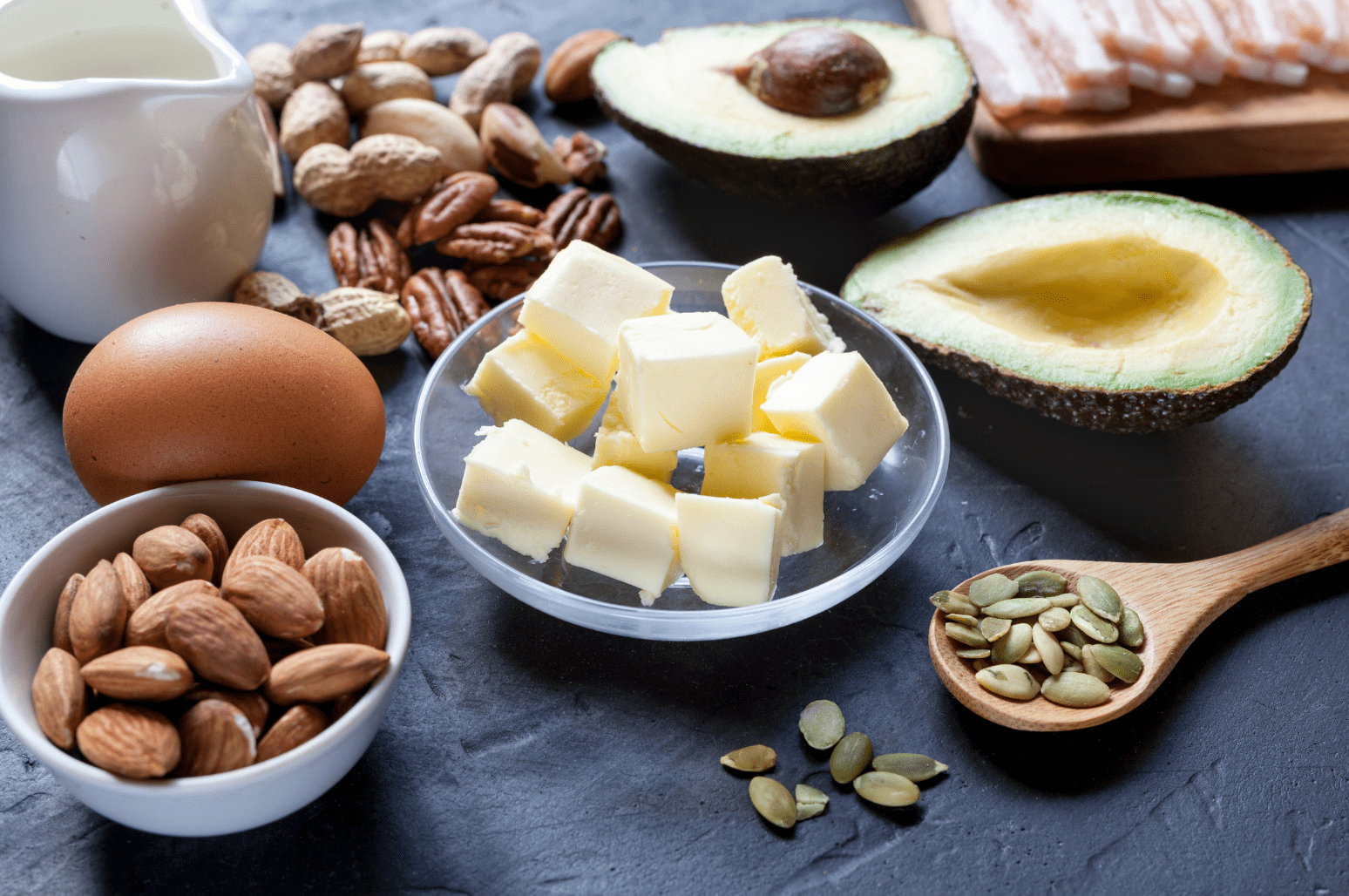
Don’t give yourself a hard time or let it get you down if you make mistakes on your keto journey. When you’re following a ketogenic diet, you might come across stumbling blocks that can hinder your health, fitness, or weight loss progress. Going keto is more than just cutting carbs.
Keto dieters, don’t despair if you reach a plateau or if a sneaky hidden sugar curveball hits you square in the face. It might take you some time to properly familiarize yourself with the nuances of the diet. No matter how many ways you fall or tumble off the keto track, you can always get right back to it and continue on your keto journey.
Here are four of the most common keto mistakes:
1. Fat-Phobia
Most Americans get the bulk of their calories from carbohydrates, particularly grains and sugars. Removing this energy source from your diet means you must replace it with something else. Due to questionable and inconclusive science stemming from the 1950s, saturated fat was wrongly demonized, and many people still cling to this fear. They believe cutting out fat will also improve their health, but that’s not just a misnomer; it’s a big mistake.
When you cut your carbs, you must add fat to compensate. If you don’t, you risk hunger and inadequate nutrition. There isn’t a valid scientific reason to avoid or fear fats, as long as you’re avoiding trans fats and choosing healthy fats like omega-3s instead. For more on this, check out the insightful Fat Fiction documentary.
If you’re on a low-carb or ketogenic diet, a fat intake of around 70% of total calories is usually recommended. Go for healthier fats like coconut oil, avocado, and fatty fish and meat. Are you eating enough fat?
2. Staying Away From Salt
On a low-carb diet, you experience a reduction in insulin levels, which is one of the reasons it can be beneficial for those with diabetes and insulin resistance [1] [2]. Insulin performs several functions in your body, including instructing your kidneys to retain sodium and your fat cells to store fat [3].
Your insulin levels decline on a low-carb diet, and your body begins shedding excess sodium and water. This is why people often report that excess bloating diminishes within a few days of low carb eating. Sodium is an important electrolyte, and when your kidneys dump too much sodium, you might be left with some symptoms of keto flu, such as headaches, fatigue, and lightheadedness.
The best way to resolve or prevent this issue is to add more sodium to your diet. Salt your foods with delicious Celtic sea salt or pink Himalayan salt! You can also drink a cup of broth every day.
3. Too Many Carbs
You might experience benefits on a healthier low-carb diet consisting of under 100-150 grams daily, which is still generally considered low-carb and still significantly lower than the standard American diet. However, if you want to get into ketosis, this carb count is too high. Most people need to lower their carb intake to under 50 grams per day to reach ketosis. If you’re not sure if you’re in ketosis, you might want to test your ketones.
4. Not Giving it Time!
Especially if you’ve been consuming a more carb-heavy diet for many years, it might take you some time to reach ketosis and truly reap the benefits. Your body needs to shift from burning carbs and sugar for energy to burning fat either from your diet or your own body stores.
It might take a few days to a week, and you might even experience some symptoms of the keto flu. If you feel unwell or you don’t experience results quickly enough, you might be tempted to quit. Keep in mind that full adaptation to a ketogenic diet can take several weeks, so it’s important to be patient in the beginning and make sure you stay on the diet. After all, patience is a virtue!
What Mistakes Have You Made on Keto?
Share your top tips for overcoming keto blunders with the community!
References
Hernandez, T. L., Sutherland, J. P., Wolfe, P., Allian-Sauer, M., Capell, W. H., Talley, N. D., Wyatt, H. R., Foster, G. D., O Hill, J., & Eckel, R. H. (2010). Lack of suppression of circulating free fatty acids and hypercholesterolemia during weight loss on a high-fat, low-carbohydrate diet. American Journal of Clinical Nutrition, 91(3), 578-585. DOI: 10.3945/ajcn.2009.27909
Noakes, M., Foster, P. R., Keogh, J. B., James, A. P., Mamo, J. C., & Clifton, P. M. (2006). Comparison of isocaloric very low carbohydrate/high saturated fat and high carbohydrate/low saturated fat diets on body composition and cardiovascular risk. Nutr Metab (London), DOI: 10.1186/1743-7075-3-7
Tiwari, S., Riazi, S., & Ecelbarger, C. A. (2007). Insulin’s impact on renal sodium transport and blood pressure in health, obesity, and diabetes. Am J Physiol Renal Physiol, 293(4), F974-984. DOI: 10.1152/ajprenal.00149.2007









